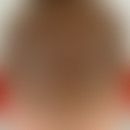DefinitionThis section has been translated automatically.
Ureteral stones - also known as ureterolithiasis - are caused by a stone condition in the kidney. Once the calculus has left the kidney, it enters the ureter and is called a ureteral stone (Manski 2019).
ClassificationThis section has been translated automatically.
You might also be interested in
Occurrence/EpidemiologyThis section has been translated automatically.
The frequency of ureteral stones was still described as a rare event by Güterbock in 1890. Morris found only 8 relevant observations in the London pathology and in the collection of the "Musée Dupuytren" only one case is described.
In 1956, Boyce et al. showed in a hospital study in the USA that 0.1% of the total population had to be hospitalized because of a ureteral stone.
A study in Uppsala and Stockholm from 1970 - 1975 already shows an incidence of urinary stone disease in women of 0.5% and in men between 1% - 3% with a recurrence rate of 42, 5% in women and 42% - 52% in men.
(Bach 2013)
The prevalence of kidney stone disease today ranges from 5% (e.g. in Germany) to 15% in countries with hot, dry climates (the so-called "urinary stone belt of the world"). The male sex is affected slightly more often than the female sex (1.3: 1). For more details, especially risk factors see. Nephrolithiasis (Herold 2020).
EtiopathogenesisThis section has been translated automatically.
PathophysiologyThis section has been translated automatically.
ClinicThis section has been translated automatically.
Ureteral stones can lead to acute colic with the following symptoms:
- sudden onset of severe up and down swelling pain in the area of the flank with radiation:
- into the upper abdomen or back in case of obstruction in the proximal part of the ureter
- into the middle and lower abdomen in case of obstruction at the pelvic junction of the ureter
- into the groin, ipsilateral testis or ipsilateral labia in case of obstruction in the lower part of the ureter
- Hematuria: in 90 % there is microhematuria, macrohematuria is found in 1 / 3 of the cases
- Dysuria
- pollakiuria (Manski 2019)
- Bladder amenorrhea
- motor restlessness of the patient (typical symptom)
- Nausea
- vomiting
- reflex subileus with retention of stool and wind (Kasper 2015)
DiagnosticsThis section has been translated automatically.
The Stone score can be used to calculate the probability of colic of the kidney or urinary tract:
- Sex: male (2 points)
- Timing: short duration of pain (> 24 h: 0 points, 6 - 24 h: 1 point, < 6 h: 3 points).
- Origin: no colored (colored: 0 points, no colored: 3 points)
- Nausea: there isnauseaor vomiting (only nausea: 1, only vomiting: 2)
- Erythrocyturia: (microhematuria: 3 points).
Evaluation (Moore 2014):
- low probability at 0 - 5 points
- moderate probability at 6 - 9 points
- high probability at 10 - 13 points
ImagingThis section has been translated automatically.
Sonography
The proximal ureteral segment can usually still be assessed sonographically, but deeper-seated calculi can no longer be visualized (Kasper 2015).
X-ray
In the abdominal overview x-ray, concrements in the ureter can often be visualized. However, the abdominal overview is preferably used in therapy control or follow-up, not so much in diagnostics (Seitz 2020).
Computed tomography
Due to its high sensitivity and specificity, CT is considered standard diagnostics in the diagnosis of ureteral calculi (Seitz 2020).
LaboratoryThis section has been translated automatically.
Urinalysis for:
- Micro- or macrohaematuria
- Leukocyturia
- Nitrite
- Protein
- Glucose
- Sediment (bacteria, crystals)
- Preparation of a culture for germ differentiation and preparation of an antibiogram
- 24h- urine collection:
- Uric acid (elevated in urate stones)
- Calcium (elevated in primary hyperparathyroidism)
- Oxalate
- Cystine
- Phosphate
- Dihydroxyadenine (DHA) in children
(Herold 2020 / Schmelz 2006)
Blood test(Herold 2020):
- Blood gas analysis
- small blood count
- Electrolytes
- CRP
- Creatinine
- Urea
- Uric acid
- PTT and INR for probable intervention (Seitz 2020)
- Analysis of departed calculi
Differential diagnosisThis section has been translated automatically.
- renal diseases:
- Tumours in the area of the urinary tract and kidneys (sonography)
- ureteral obstruction by e.g. blood clots, structures (sonography)
- renal infarction (occurs most frequently in patients with atrial fibrillation; there is hematuria, proteinuria, very high LDL with at most slight changes in GOT and AP; diagnosis by color Doppler sonography)
- extrarenal diseases:
- Appendicitis (usually insidious onset, tenderness McBurney point, temperature difference between rectal, axillary)
- pedunculated ovarian cyst (sonography, gynaecological examination)
- extrauterine pregnancy (increased beta HCG in urine, sonography, gynaecological examination)
- Adnexitis (sonography, gynecological examination)
- Testicular torsion (diagnosis must be made within 6 hours, otherwise there is a risk of testicular loss; diagnosis by colour Doppler)
- Biliary colic (pain radiating to the right shoulder, sonography)
- Pancreatitis (amylase and lipase elevated, abdomen soft)
- Rupture of abdominal aortic aneurysm (ultrasound, CT angiography [Debus 2018]).
- Ileus (mechanical: no bowel sounds on auscultation, exclude possible hernial orifices, abdominal ultrasound or abdominal radiography)
- chronic inflammatory bowel disease (history)
- Mesenteric infarction [Kuhlmann 2015] (age, serum lactate elevated, blood on finger stick rectal examination, diagnosis by biphasic contrast CT).
- Diverticulitis (history, abdominal palpation)
- lumbar spine syndrome
- lumbar herpes zoster
Complication(s)(associated diseasesThis section has been translated automatically.
-
Urinary tract infection (UTI), as this can lead to urosepsis. UTI is the most important and also the most frequent complication (Herold 2020). Early symptoms of urosepsis are:
- Tachypnea (> 20 breaths / min)
- Tachycardia (> 90 beats / min)
- Hyperthermia (> 38 ° C)
- Hypothermia (< 36 ° C, alternating with febrile episodes) (Schmelz 2006)
- Fornix rupture due to pressure increase in the renal pelvicocaliceal system (Herold 2020)
- Urinary retention
- Urinoma
- Hydronephrosis
- Renal abscess
- Renal insufficiency up to the loss of function of the kidney (Manski 2019)
TherapyThis section has been translated automatically.
1. spontaneous discharge of a calculus:
If the stone size is < 5 mm (Herold 2020), spontaneous discharge should be waited for, with regular monitoring of body temperature and urine. In approx. 90 % these stones pass spontaneously (Herold 2020).
However, spontaneous clearance depends on the location of the stones (Schmelz 2006):
- proximal ureter: 25 %
- middle ureter: 45 %
- distal ureter: > 70 %
- Acceleration of stone passage
Drug expulsive therapy (MET) with alpha blockers and calcium channel blockers can increase the excretion rate and accelerate the rate of stone passage (Seitz 2020).
Dosage recommendation: e.g. tamsulosin 1 x 0.4 mg / d (Truß 2005) or nifedipine 40 mg - 60 mg / d (Kuhlmann 2015).
Supportive effects are also:
- drink plenty of fluids
- local application of heat
- exercise
If fever and / or anuria occur, the patient should be immediately transferred to inpatient treatment (Herold 2020).
2. pain therapy in case of colic:
In the case of acute colic, analgesic treatment is of primary importance.
Suitable analgesics for this purpose are (Seitz 2020):
- Metamizol: 1 g - 2 g i.v. is the drug of first choice, as it also has a spasmolytic and antinociceptive effect on the ureter.
- Paracetamol: 1 g i. v.
- Diclofenac: 75 mg / kg bw i. v.
- Morphine: 0.1 mg / kg bw i. v.
ASA is contraindicated in planned extracorporeal shock wave lithotripsy (ESWL) because of the risk of renal hematoma.
In a randomized study, the combination of paracetamol and diclofenac was shown to be superior to the administration of morphine for pain relief (Seitz 2020).
3. urinary diversion:
Patients presenting with urinary retention and signs of infection are a medical emergency requiring immediate relief by ureteral splinting or percutaneous nephrostomy plus antibiotic treatment (according to the antibiogram) (Kuhlmann 2015).
The indication for urinary diversion is given in:
- high-grade obstruction with consecutive urinary retention kidney
- increasing retention values (indication of postrenal renal failure)
- colic that cannot be controlled with medication
Ureteral splinting can be performed as:
- transurethral insertion of a DJ ureteral splint
- as percutaneous nephrostomy
Both procedures are to be considered equivalent with regard to urinary diversion.
For ureteral splinting, a distinction is made between the following catheters:
- Drainage from the ureter out of the body as in:
- Mono J- catheter
- Ureteral catheter (UK)
- by ureteral rails that can be retracted into the body, as for example with:
- Double J catheter
Ureteral conduits can be drained transurethrally, transcutaneously, transvesically or via a urostomy (TUUC, ileum conduit) (Hofmann 2018).
- Performance of transurethral ureteral stenting: Before the procedure, a so-called "single-shot" periinterventional antibiotic prophylaxis is administered e.g. levofloxacin 500 mg p. o. or sultamicillin 750 mg p. o.. In addition, the stenosis is imaged retrogradely and documented radiologically, since it is no longer possible to determine the etiology of the stenosis after the splint has been inserted. The procedure itself is usually performed under local anesthesia in the lithotomy position. Insertion of the cystoscope under visualization and visualization of the affected ostium. The ureteral catheter is inserted with the guide wire (the so-called "inner core") until the tip just appears in front of the optic. Careful advancement of the catheter into the ureter up to approx. 1 cm. The inner core is then removed. The catheter is continuously rinsed with 3 - 5 ml NaCl 0.9 % to prevent the formation of bubbles (if the catheter is applied intermittently, there is a risk of recurrent colic). After insertion of a usually 0.035 inch polytetrafluoroethylene coated wire or a soft double J-wire, the catheter is advanced further beyond the obstruction (a contrast agent may be required for this). Once the wire has reached the renal pelvis, the flexible end should be positioned in a calyx group to avoid any dislocation. Replacement of the catheter, if at all necessary, is required after 3 to 6 months at the latest, as the catheter may otherwise become incrusted (Hofmann 2018). Under the ureteral stent, patients may experience discomfort such as:
- Urinary urgency
- Pollakisuria
- flank or lower abdominal pain
- mild macrohaematuria
These symptoms can be treated with an alpha blocker (Seitz 2020). Dosage recommendation: e.g. tamsulosin 1 x 0.4 mg / d
(Hofmann 2018 / Truß 2005)
Operative therapieThis section has been translated automatically.
1. endourological procedures for stone removal: Before a procedure it must be clarified:
- Is there a urinary tract infection? If yes, antibiotic treatment must be started immediately according to the antibiogram.
- Discontinue any existing anticoagulation. If low-dose treatment with ASA cannot be interrupted, it is possible to continue it after risk assessment for ureterorenoscopy (URS) (Seitz 2020; Hofmann 2018).
Ureterorenoscopy (URS), extracorporeal shock wave lithotripsy (ESWL), laparoscopic or open procedures, and chemolitholysis are available for endourological intervention (Seitz 2020).
Indications for interventional therapy include:
- Obstruction with anuria
- Obstruction with existing febrile urinary tract infection
- Obstruction of a single kidney
- obstruction after kidney transplantation
- Bilateral obstruction
- stone size ≥ 5 mm
- uncontrollable pain
For detailed information on endourological procedures, see. Nephrolithiasis
1.1 Ureterorenoscopy (URS): URS is the method of choice for medium and distal ureteral stones. However, proximal calculi are now also often treatable with the aid of URS - due to further development of instruments (Manski 2019).
Ultrasound, laser, pneumatic and electrohydraulic lithotripsy as well as baskets and forceps are available as tools for ureterorenoscopy (Herold 2020).
Indications:
- in the proximal ureter:
- Concrements > 10 mm (equivalent to ESWL).
- Concrements ≤ 10 mm (2nd recommendation).
- in the middle and distal ureter:
- Concrements (1st recommendation) (Seitz 2020).
Complications:
- Fever
- persistent haematuria
- Renal colic
- ureteral perforation (2% - 4%)
- ureteral rupture (< 1%)
- injury of the ureteral mucosa
- Post-interventional ureteral strictures (1% - 3%) (Kuhlmann 2015).
However, serious complications are rare, occurring in < 1% (Seitz 2020).
The success rate is for:
- Proximal ureteral stones: 60 % - 90 %.
- distal ureteral stones: 90 % - 100 % (Schmelz 2006)
For further details see ureterorenoscopy.
1.2 Extracorporeal shock wave lithotripsy (ESWL): A prerequisite for ESWL is the radiological localization of the calculus.
Before starting the treatment, (Seitz 2020) an internal urinary splint (splint) should be inserted to allow the stone fragments to pass painlessly through the ureter (Herold 2020).
Any existing urinary tract infection must be covered with antibiotics before the start of therapy, and adequate analgesia should also be ensured throughout the duration of ESWL (Seitz 2020).
Indications are:
- in the proximal ureter
- Concrements > 10 mm (equivalent to URS).
- Concrements of ≤ 10 mm (1st recommendation).
- in the middle and distal ureter
- Calculi (2nd recommendation) (Seitz 2020).
Locating prevesical calculi is often technically difficult (Manski 2019).
Contraindications are:
- existing anticoagulation (treatment with ASA can possibly be continued if the indication is carefully checked)
- coagulation disorder
- untreated urinary tract infections
- Pregnancy
- aneurysm in the focal zone
- severe nephrocalcinosis
- obstruction distal to the stone
- pancreatitis
- uncontrolled arterial hypertension (Seitz 2020)
Complications may include:
- Skin suffusion
- subcapsular renal hematoma
- colic and congestion caused by residual fragments (Herold 2020)
- Sepsis
The rate of serious complications such as hematoma, sepsis etc is low (Seitz 2020).
The success rate is 90% (Herold 2020).
1.3 Open stone surgery (ureterotomy): Nowadays, laparoscopic or open procedures are only used in exceptional cases, e.g. in the case of additionally existing anatomical changes that require correction or in the case of very large ureteral stones (Seitz 2020).
Ureterotomy is usually performed laparoscopically (Manski 2019).
1.4 Chemolitholysis: Chemolitholysis should only be used as first-line therapy for uric acid stones.
The pH of the urine is adjusted to a value between 7.0 - 7.2 using sodium bicarbonate or potassium citrate (Kuhlmann 2015). Parallel to this, treatment with allopurinol (e.g. 300 mg / d) is carried out.
Long-term chemolitholysis should be avoided because of the risk of calcium phosphate stone formation (Seitz 2020).
Progression/forecastThis section has been translated automatically.
The prognosis of ureteral colic is good. Up to 90 % of calculi pass spontaneously anyway (Herold 2020).
The risk of recurrence is 50% overall if left untreated, but is highly dependent on the type of stone involved (see types of urinary stone). Appropriate metaphylaxis can reduce this risk to < 15% (Kuhlmann 2015).
The occurrence of kidney stones doubles the risk of developing chronic kidney disease (Kuhlmann 2015).
For more details, see. Nephrolithiasis
ProphylaxisThis section has been translated automatically.
Metaphylaxis comprises preventive measures designed to prevent the development of new kidney stones (Kuhlmann 2015).
The basis for metaphylaxis is the analysis of the urinary stone composition, which should be performed for every kidney stone (Seitz 2020).
One differentiates in metaphylaxis general measures for patients of the low-risk group and a special metaphylaxis for high-risk groups.
(Herold 2020)
For all urinary patterns:
- Increase drinking volume to a urine volume of at least 2 l.
- circadian drinking
- avoid apple and grapefruit juice
- urine density < 1.010 kg / l
- high-fibre, balanced (Mediterranean) diet
- potassium intake 1 - 1.2 g / d
- Protein restriction to 0.8 - 1.0 g / kg bw / d
- Salt intake < 6 g / d
- Regulation of body weight
- Adequate physical exercise
- Stress limitation
(Herold 2020 / Kasper 2015 / Kuhlmann 2015 / Schmelz 2006)
The high-risk group includes:
- early occurrence of lithiasis (already in childhood)
- familial lithiasis
- single kidney
- Certain stones like:
- brushite-containing
- uric acid containing
- infectious stones
(Seitz 2020)
The high-risk group comprises approximately 25%-30% of urinary stone patients (Knoll 2016).
In these patients, an extended, (stone-) specific metabolic work-up is indicated at an early stage (Seitz 2020). It is not uncommon to find genetically determined stone formation in this clientele (Knoll 2016).
- Brushite containing stones:
- In the case of persistently elevated urine pH - without evidence of an infection - L-methionine should be administered to lower the pH to values between 5.8 and 6.2 (dosage recommendation: 500 mg 2 - 3 x / d) (Wendt- Nordahl 2014).
- Uric acid stones:
- Pure uric acid stones:
- The urine can be neutralized by dietary measures such as avoiding purine-containing foods (e.g. offal, beans, peas, asparagus, spinach, etc.), by protein restriction, etc. The pH value of the urine can be lowered by medication with potassium citrate (recommended dosage: 3 g - 5 g / d) (Kuhlmann 2015).
- Ammonium- urate stones:
- Medicinal acidification of the urine with L-methionine (dosage recommendation: 500 mg 2 - 3 x / d) to pH values between 5.8 - 6.2 (Seitz 2020).
- Pure uric acid stones:
- Infectious stones:
- To acidify the urine, one can urge the patient to drink more apple juice or cranberry juice (Herold 2020) or use methionine (dosage recommendation: 500 mg 2 - 3 x / d) medicinally (Kuhlmann 2015).
For more details on metaphylaxis of the high-risk group, see. Types of urinary stones and nephrolithiasis.
In patients from the high-risk group, appropriate measures can prevent further recurrences in 75% (Fisang 2015).
LiteratureThis section has been translated automatically.
- Bach D et al. (2013) Urolithiasis: epidemiology general causal and formal genesis diagnosis. Conservative, instrumental and surgical urinary stone removal. Springer Verlag 4
- Debus E S et al. (2018) S3 guideline on screening, diagnosis, therapy and follow-up of abdominal aortic aneurysm.AWMF registry number 004-14.
- Ellinger K et al. (2011) Kursbuch Notfallmedizin: orientiert am bundeseinheitlichen Curriculum Zusatzbezeichnung Notfallmedizin. Deutscher Ärzte- Verlag 721 - 724
- Fisang C et al (2015) Urolithiasis - interdisciplinary challenge in diagnostics, therapy and metaphylaxis. Dtsch Artzebl Int (112) 83 - 91
- Güterbock P (1890) The surgical diseases of the urinary organs for physicians and students, part 4. Deuticke Verlag 828.
- Hegele A et al (2015) Urology: intensive course for continuing education. Thieme Verlag 476
- Herold G et al (2021) Internal medicine. Herold Publishers 658
- Herold G et al (2020) Internal medicine. Herold Publishers 657 - 658
- Hofmann R (2018) Endoscopic urology: atlas and textbook: extras online. Springer Verlag 310
- Kasper D L et al (2015) Harrison's Principles of Internal Medicine. Mc Graw Hill Education 1866 1871
- Kasper D L et al (2015) Harrison's internal medicine. Georg Thieme Publishers 2300
- Knoll T et al. (2016) Guidelines on diagnosis, therapy and metaphylaxis of urolithiasis of the working group "Urinary stones" of the Academy of German Urologists and the working group "Endourology and stone disease" of the Austrian Society of Urology".
- Kuhlmann U et al. (2015) Nephrology: pathophysiology - clinic - renal replacement procedures. Thieme Verlag 577
- Manski D (2019) The urology textbook. Dirk Manski Publishers 329
- Moore C L et al. (2014) Derivation and validation of a clinical prediction rule for uncomplicated ureteral stone-the STONE score: retrospective and prospective observational cohort studies. BMJ (348) g 2191
- Risler T et al (2008) Specialist nephrology. Elsevier Urban and Fischer Publishers 878
- Schmelz H U et al (2006) Facharztwissen Urologie: differentiated diagnostics and therapy. Springer Verlag 122 - 143
- Seitz C et al. (2020) S2k-Leitlinie zur Diagnostik, Therapie und Metaphylaxe der Urolithiasis (AWMF Registry Number 043 - 025).
- Truß M C et al (2005) Pharmacotherapy in urology. Springer Medizin Verlag 302
- Wendt- Nordahl G (2014) Metabolic diagnosis and prevention of urolithiasis. The Urology 1 - 21 DOI 10.1007/978-3-642-41168-7_37-1.
Disclaimer
Please ask your physician for a reliable diagnosis. This website is only meant as a reference.




